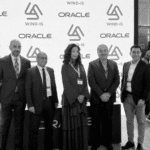Over the past era, wireless technologies have undergone massive growth.
When we think of cloud computing, we think of situations, products and ideas that started in the 21st century. This is not exactly the whole truth. Cloud concepts have existed for many years. Here, I will take you back to that time.
It was a gradual evolution that started in the 1950s with mainframe computing.
Multiple users were capable of accessing a central computer through dumb terminals, whose only function was to provide access to the mainframe. Because of the costs to buy and maintain mainframe computers, it was not practical for an organization to buy and maintain one for every employee. Nor did the typical user need the large (at the time) storage capacity and processing power that a mainframe provided. Providing shared access to a single resource was the solution that made economical sense for this sophisticated piece of technology.
—
After some time, around 1970, the concept of virtual machines (VMs) was created.
It became possible to execute one or more operating systems simultaneously in an isolated environment. Complete computers (virtual) could be executed inside one physical hardware which in turn can run a completely different operating system.
The VM operating system took the 1950s’ shared access mainframe to the next level, permitting multiple distinct computing environments to reside on one physical environment. Virtualization came to drive the technology, and was an important catalyst in the communication and information evolution.
—
In the 1990s, telecommunications companies started offering virtualized private network connections.
Historically, telecommunications companies only offered single dedicated point–to-point data connections. The newly offered virtualized private network connections had the same service quality as their dedicated services at a reduced cost. Instead of building out physical infrastructure to allow for more users to have their own connections, telecommunications companies were now able to provide users with shared access to the same physical infrastructure.
—
In the 2000s amazon created AWS, google introduced its beta version of the search engine, Microsoft released a cloud computing service named Microsoft Azure for testing, deployment and managing applications and services. Oracle introduced Oracle Cloud for business (IaaS, PaaS and SaaS). Currently, as per records, Linux and Microsoft Azure share most of their work parallel. According to Gartner, global public cloud spending has reached $332.3 billion in 2022. Cloud spending growth can be attributed to the increased adoption of technologies such as virtualization, edge computing etc.
—
Concluding Lines
Cloud computing is not new, and the technology continues to evolve. At first, during the 1940s and 1950s, thinkers and innovators developed cloud concepts – ideas, software, and hardware – to address some of the problems proposed and examined prior
Eventually, during the 1990s, cloud computing infrastructure as we know it today was developed. In the early 2000s, AWS was founded and released the then-new EC2 service. Subsequently, “big data” technologies emerged to support edge computing, among other things.
Over the past 10 years, many more companies, such as Microsoft Azure and Google Cloud Platform, joined the cloud landscape to offer unique cloud services. Today, cloud computing is not only a field, it is also a development mindset. This shift creates more disruptions in its wake, advancing relatively new fields such as cloud-native development, edge computing, and serverless infrastructure.
From reliability to productivity and from cost-effectiveness to performance; the cloud computing services have them all. The concept of cloud has, therefore, a great future ahead. We, at Wind-IS, are ready to embrace the advancements of cloud computing to make robust applications that enhance the convenience and establish a centralized model. Let’s connect to discuss the scope of this futuristic technology for your business.
The following list briefly explains the evolution of cloud computing:
- Grid computing: Solving large problems with parallel computing
- Utility computing: Offering computing resources as a metered service
- SaaS: Network-based subscriptions to applications
- Cloud computing: Anytime, anywhere access to IT resources delivered dynamically as a service



